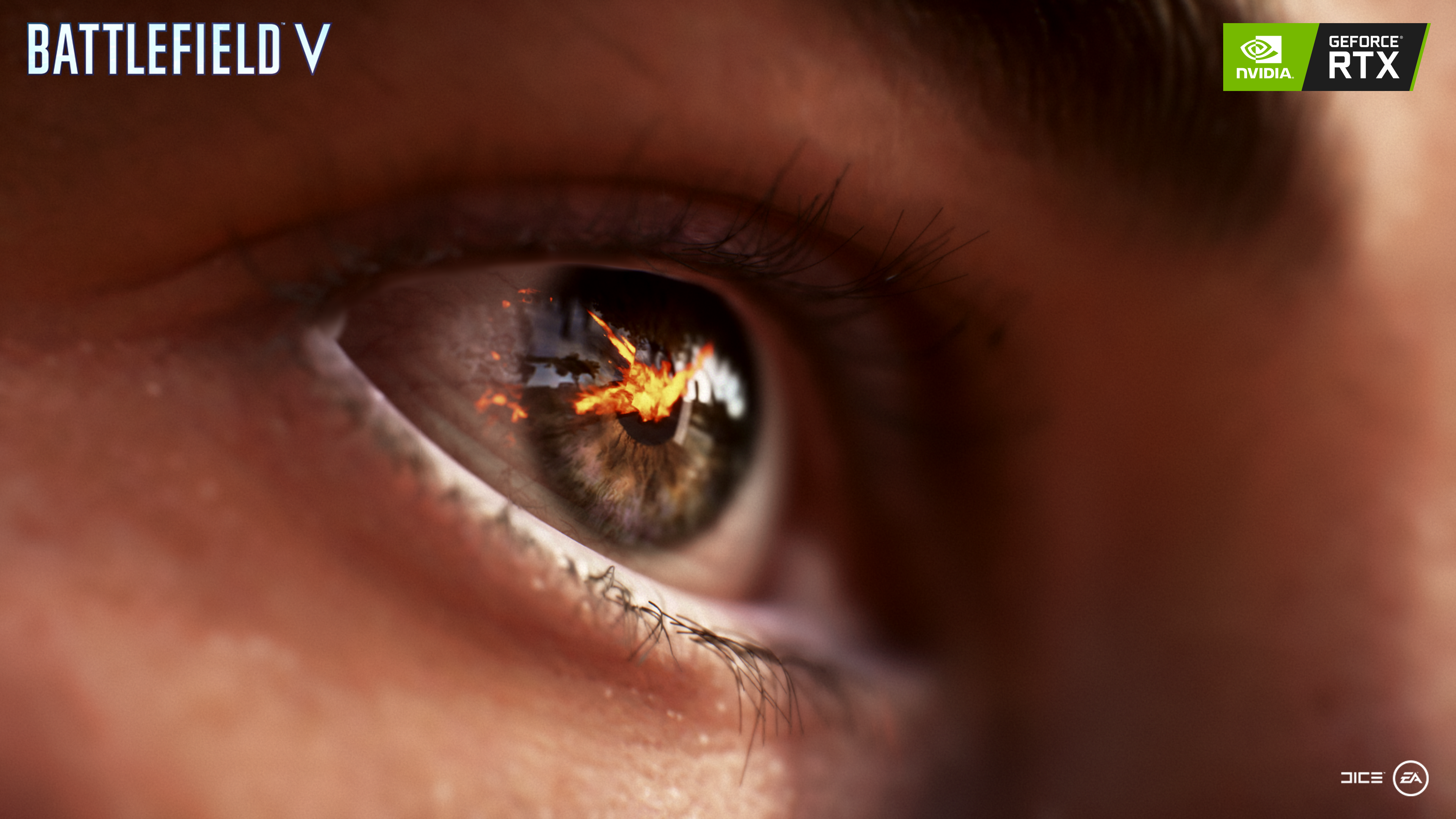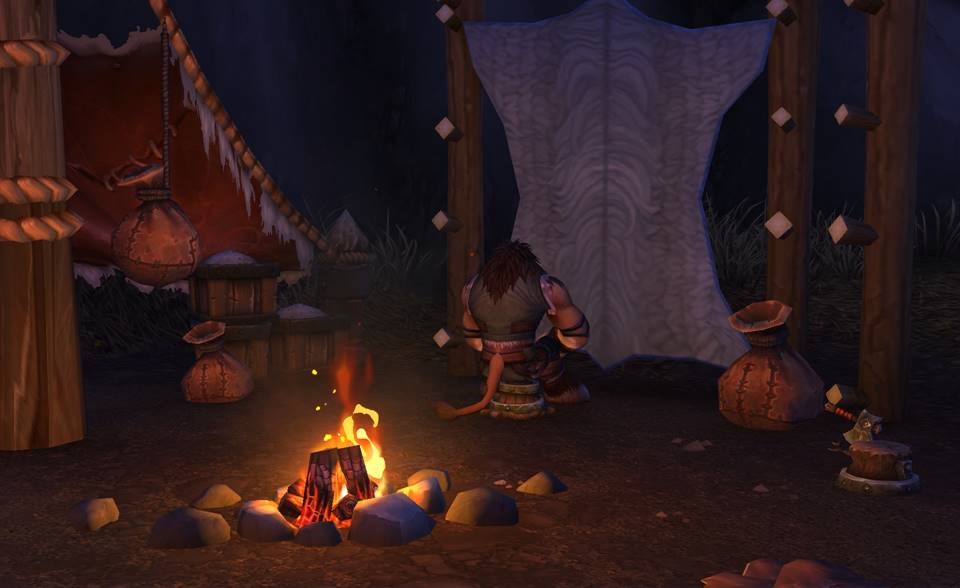World of Warcraft: Shadowlands – how one of the oldest games uses the newest lighting tech
Where to look in-game to see the ray tracing difference

World of Warcraft is a sixteen-year-old game, but that doesn’t mean it’s stuck with decades-old graphics. WoW’s engineers have updated the game’s tech with every expansion, and the new Shadowlands pack this fall brought in a subtle, but important, new addition to the scenery: ray tracing.
We say subtle because Warcraft’s lighting is already an enormous part of the game; a single map can have thousands of light sources, and that doesn’t include weather effects (which include ambient and natural lighting) and other sources of illumination. So if you’re hoping ray tracing will give you a BAM, now-you-see-it-now-you-don’t impact, you may be disappointed. But like a gentle soundtrack score, ray tracing can increase your immersion in the senior MMORPG, and if you know where to look, you’ll see the difference.
We enlisted Ryan Anderson, WoW’s lead engine programmer, to shine a light on Warcraft’s newest shadows.
The basics: What ray tracing is, and what graphics cards include it

Ray tracing turns light into streams of pixels, allowing the movement of those streams to be calculated and displayed in real time. When a stream of ray traced light hits an object, the pixels bounce off, reflecting and refracting, creating realistic effects and especially lifelike shadows, which move as the object does. The rays that are absorbed, reflected or refracted can in turn hit other objects, transforming again.




The tech has been used for a while in pre-rendered materials (animated movies, pre-rendered game cinematics) but didn’t see much use in gaming until the best graphics cards recently started including the tech to accelerate the process to acceptable speeds for games. While cards supporting ray tracing hit the market in 2018, most PC games featuring the tech didn’t appear on the market or in updates until late last year. And now you’ll also see ray tracing in console games for the Xbox Series X and Playstation 5 (assuming you can lay your hands on one.)
NVIDIA built native ray tracing support into its Turing and Ampere graphics cards, but some support for basic ray tracing was also patched into older models from 1060s on up. For AMD cards, your choices are more limited: the 6800, our pick of the 6800 XT, and the 6900 XT all support ray tracing, but are incredibly hard to find.
For a fun little demo of what ray traced reflections look like in action, see this demo from the Unreal Engine folks way back in 2018:
Sign up for breaking news, reviews, opinion, top tech deals, and more.
How lighting in World of Warcraft: Shadowlands works


Lighting in WoW is created by layering effects, ranging from broad ambient daylight or dusk to specific spotlights cast by individual objects – a torch, say, or a light fixture, or even an NPC.
“It can vary depending on time of day, weather, world location, interior or exterior locations, map phases, local lights, and so forth,” Anderson said. “Light can be both baked into vertices and added at run time from dynamic lights.”
Traveling from vanilla zones through each expansion into Shadowlands gives you a 16-year tour of lighting technology in Warcraft.
Which of those you see may depend on the area where you’re standing. Lighting is generally baked in at the time an expansion is built – so the zones included in each new expansion include the new lighting features available at that time. Traveling from vanilla zones through each expansion into Shadowlands gives you a 16-year tour of lighting technology in Warcraft.[1]
“Given the breadth of content that’s been created for WoW over the years, and the fact that we support that older content as well as new ray-traced lights, you can imagine there’s quite a lot of variation in our lighting model. There can be thousands of lights in a map, and each can have an impact on performance,” Anderson said, and developers cheat a little to try and keep the processor load down.
“Lights marked as ray-traced shadow casters have the additional impact of calculating whether a pixel is shadowed from that light. We use features like draw distance, buffer resolution, and rays per pixel to scale the impact for various levels of hardware.”
Why World of Warcraft: Shadowlands includes ray tracing
So why build such a complex, heavy-load system into a venerated old game like Warcraft at all? WoW is famous for supporting older and limited-power PCs; it’ll run on a Mac laptop with integrated graphics. Including support for ray tracing is part of Blizzard’s balancing act between new tech and a hardware friendly approach.
“We’re always looking for ways to improve the visual quality of World of Warcraft while maintaining the game’s iconic art style,” Anderson said. “Ray tracing felt like a great way to help improve the graphics and at the same time make our worlds more immersive.”
Plus, he said, Blizzard could see the (illuminated) writing on the wall: “Ray tracing is a technology we see as becoming more mainstream over time, meaning we expect most players to eventually be playing on systems that support ray tracing. This is a great way for us to support enthusiasts now while paving the way for more widespread availability of ray tracing in the future.”


That said, engineers had to figure out how to support ray traced lighting without messing up Shadowlands’ look and feel for players who would never have that capability.
“WoW is designed to be played on a very broad range of hardware, from brand-new graphics cards with ray tracing support on one end to older integrated GPUs on the other,” he said. “We try to emphasize the Blizzard value of ‘gameplay first’ by not allowing our excitement to implement new features negatively impact the game experience of players with older hardware.
“In the case of ray traced shadows, we make sure that we’re focused only on optionally improving visual quality, and not relying on them for things like gameplay mechanics.”
What you’ll actually see


You’ll see the impact of Warcraft’s ray tracing in its shadows, and in general, they’ll be refined, not brand-new. Players cast shadows from their own characters by moving, and those are more detailed as a result of ray tracing. Some shadows cast from far-away lights will be realistically softer, mimicking the behavior of light in the real world. More lights in the game can throw shadows than ever before, so standing in the right place will throw realistic multi-shadows.
How WoW’s engineers chose which lights would give ray-traced shadows
Once Blizzard chose to support ray tracing, it gave its artists the tools to turn that feature on for every light in the game. Designers working on scenery and dungeons had the option of ray tracing every time they placed a lighting source in the game.
“Light height, color, intensity, casting radius, and so forth can all contribute to the aesthetics of an environment,” Anderson said. “Some areas have a very large number of lights – so with respect to ray tracing, our artists need to take into account which lights will best contribute to player experience rather than simply turn on shadow casting for thousands of lights.”
Where to go to see ray tracing’s effects best in Shadowlands


If you’re one of the many who flipped ray tracing on and off in Shadowlands and didn’t think you saw much of a difference, you may not have been looking in the right place – or for the right things. Ray tracing provides a subtle enhancement to WoW’s lighting, rather than a dramatic addition of new shadows or bright lighting. That doesn’t mean you can’t see the effects if you look, however.
“My personal favorite is when I see individual lights casting shadows or see multiple shadows from the character,” Anderson said. “I really like watching the shadow change direction with respect to the caster and the player as the player moves past the light.”
So where should you look?
“Oribos is a great place for this, as many of the lights are shadow casters. However, if you are looking for shadow quality, Ardenweald might be the best example. A lot of the tree shadows look vastly improved with ray-traced shadows over traditional shadows,” he said.
One of the best ways to see those tree shadows, in our opinion, is to get out into the Ardenweald landscapes at night and stand still. Those giant trees MOVE - so if you’re standing still, you’ll see the interplay and shadows sweep over you, in one of the most surprising and delighting ray tracing interactions in game.